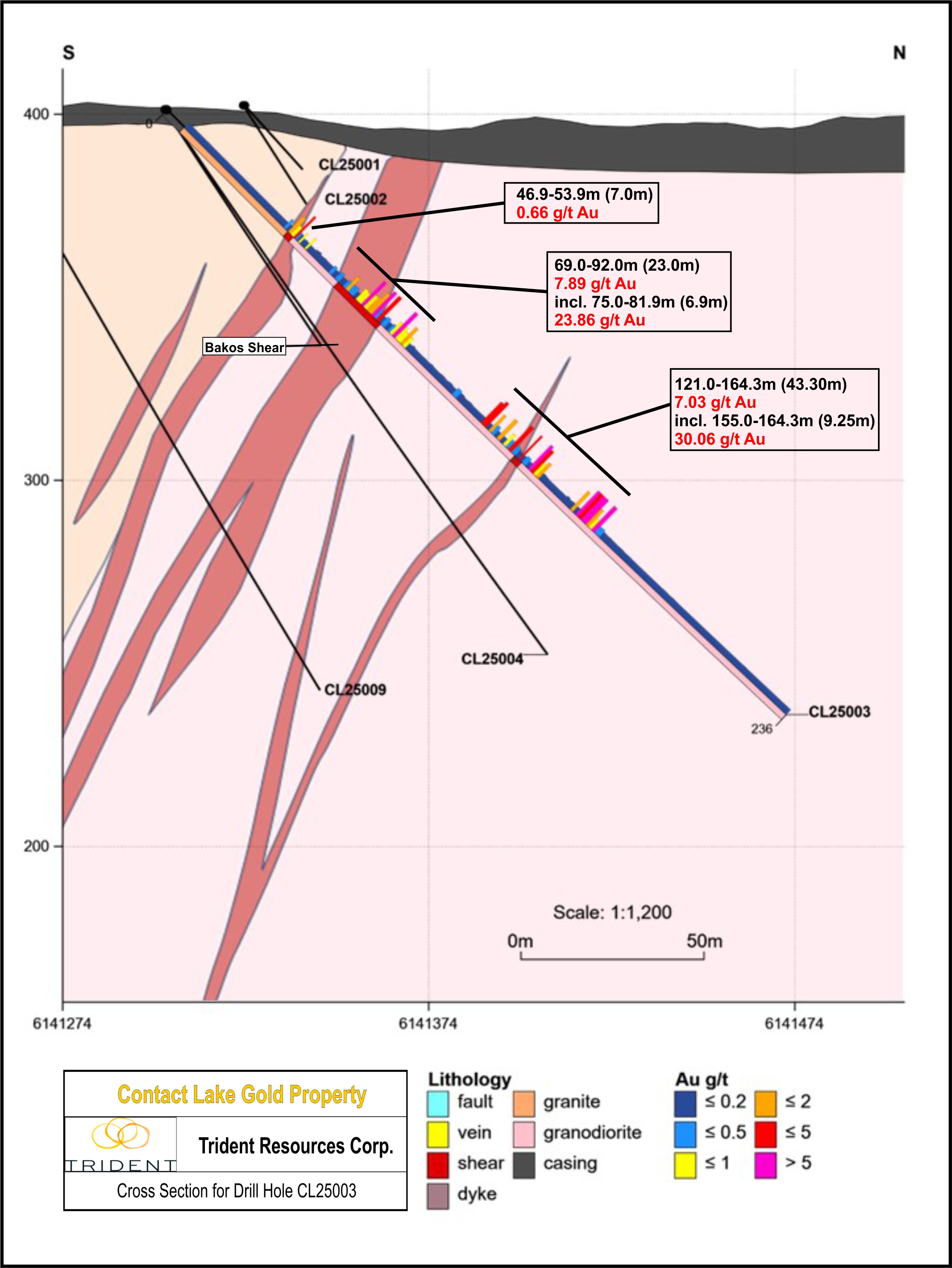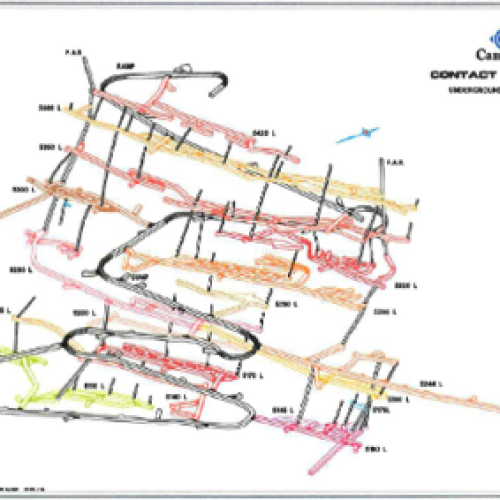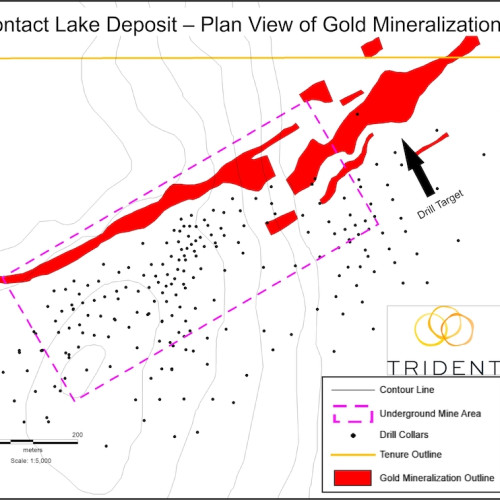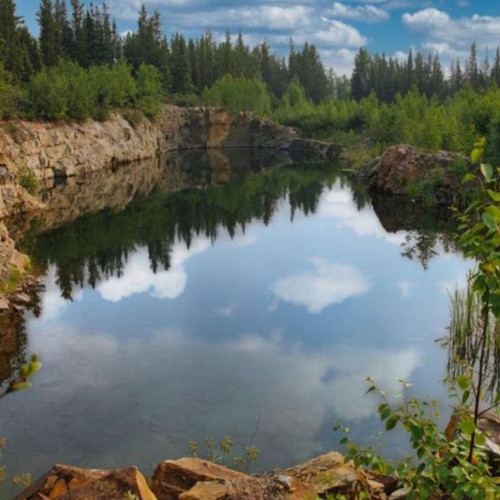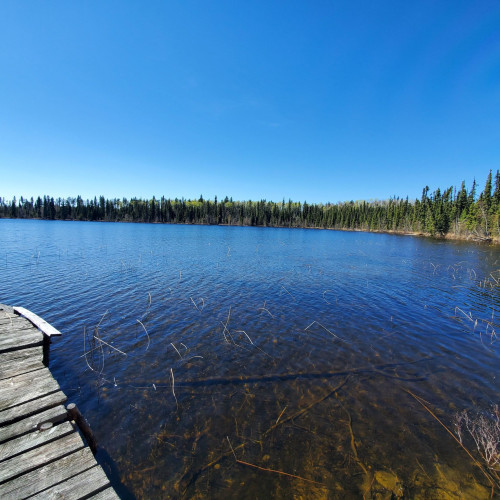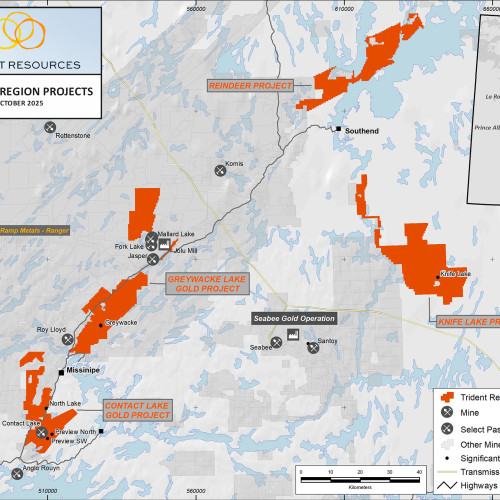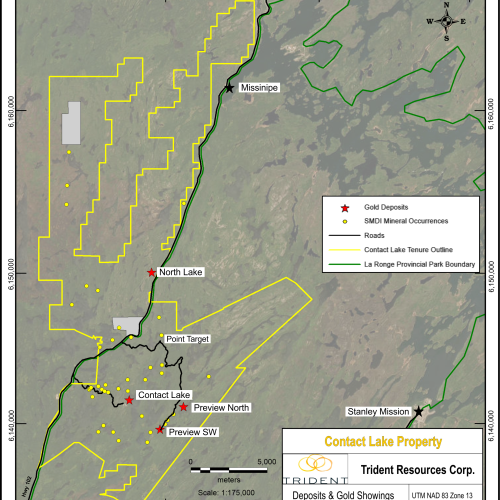Cameco Contact Lake Operation Final Report, 1999
The Contact Lake Project covers approximately 472 hectares and includes the past-producing Contact Lake Gold Mine, which was operated by Cameco Corporation between 1994 and 1998. Situated in the highly prospective La Ronge Gold Belt of Saskatchewan, the property hosts multiple deposits and targets such as the Contact Lake Deposit, Preview SW Deposit, Preview North Deposit, North Lake Deposit, and the Point Lake Target. Together, these provide shareholders with significant discovery potential across a well-endowed gold belt.
The project is located about 60 kilometres northeast of La Ronge and is easily accessed via Highway 102. The main access road leading from the highway into the project area has been reactivated, and key infrastructure remains in place, including powerlines that were originally built to service the mine. The community of Missinipe lies just 30 kilometres to the north, further supporting accessibility.
Mining at the Contact Lake Gold Mine, also referred to historically as the Bakos Gold Zone, took place from December 1994 through May 1998. The deposit was initially identified in 1984 by Saskatchewan Mining Development Corporation—later Cameco Corporation—during its Preview Lake Exploration Program. This program also led to the discovery of other nearby targets including Point Lake and the Preview SW Deposit.
Geologically, the deposit lies at the southern end of the Proterozoic La Ronge Domain and is hosted by the Little Deer Lake pluton, a dominantly granitic intrusive body covering roughly 48 square kilometres. This setting has long been recognized as highly prospective for gold mineralization.
Exploration has recently resumed at the former mine site, with a fully funded and permitted Phase 1 drill program underway. The program was initially planned for 5,000 metres but has been expanded to more than 6,500 metres across 18 to 20 drill holes. Drilling is focused on high-priority zones while also confirming historical data, with the goal of advancing the project toward future discovery and resource growth.
2025 Drill Program Highlights:
The drill program continues to advance successfully with excellent progress made to date. Costs are tracking lower than expected, aided by nearby infrastructure that is improving overall efficiency. Encouraging visual mineralization observed in numerous holes has prompted an expansion of the program by approximately 1,500 metres, increasing the total planned drilling to over 6,500 metres in 18–20 holes. The program remains fully funded, with core samples currently being processed and sent for geochemical analysis, and assay results are pending.
Trident recently report strong initial results from the ongoing 2025 diamond drill program at its flagship Contact Lake Gold Project in Saskatchewan. The first three holes, totaling 746 metres of a planned 6,500-metre program, have successfully intersected multiple zones of high-grade gold mineralization beneath and along strike of the historic Bakos Mine workings. Notably, drill hole CL25003 returned 7.03 g/t gold over 43.25 metres starting at 121.0 metres depth, including 30.06 g/t gold over 9.25 metres, confirming significant high-grade mineralization within the footwall zone below the Bakos shear. Additional intercepts include 2.49 g/t gold over 29.61 metres (including 27.09 g/t over 2.21 metres) in hole CL25002, and 0.56 g/t gold over 29.50 metres in hole CL25001. These early results highlight the strong potential to expand known mineralization and unlock the broader scale of the Contact Lake gold system.
Cross Section Depicting Depth CL25001 & CL25002:
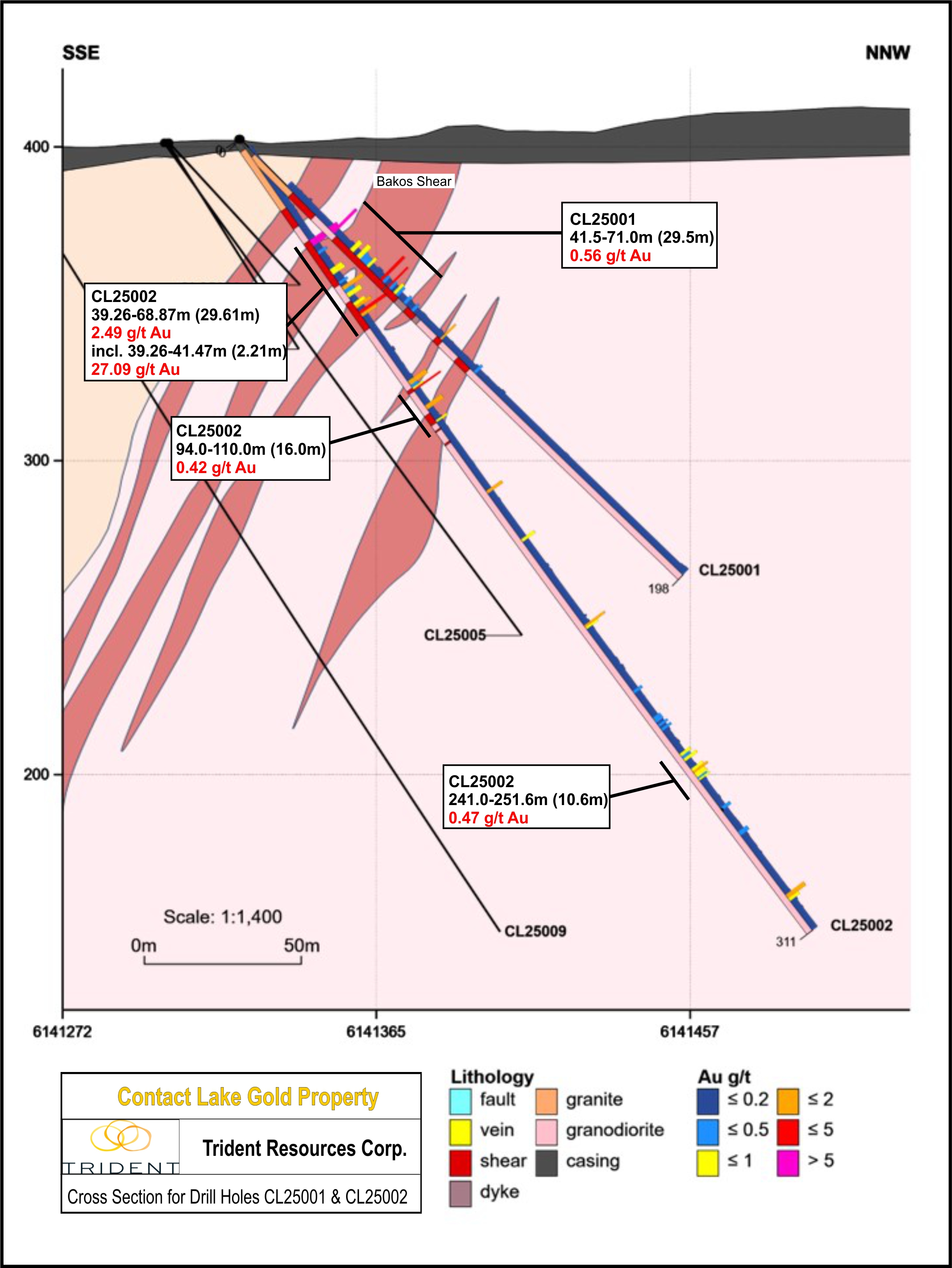
Cross Section Depicting the Extension to Vertical Depth – CL25003:
